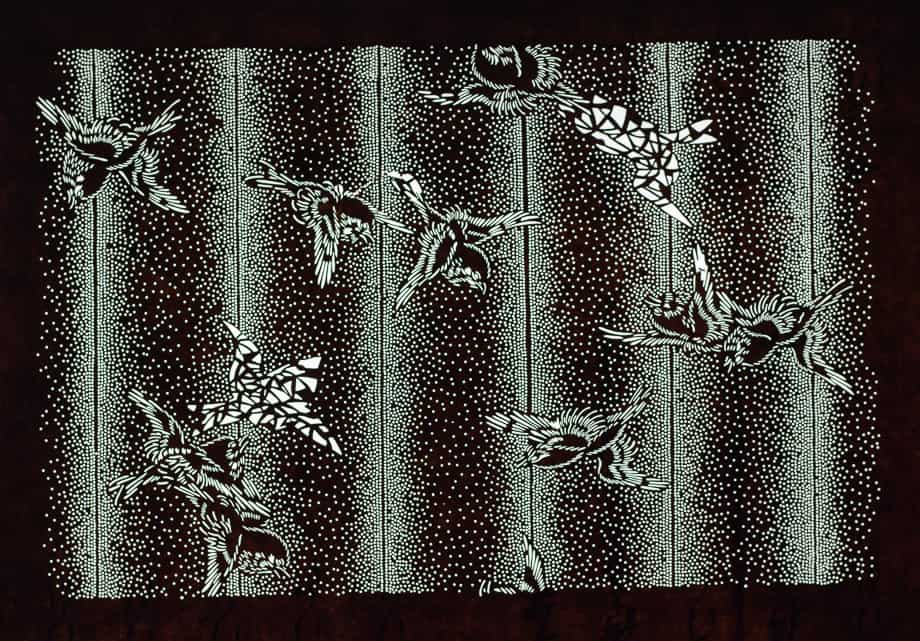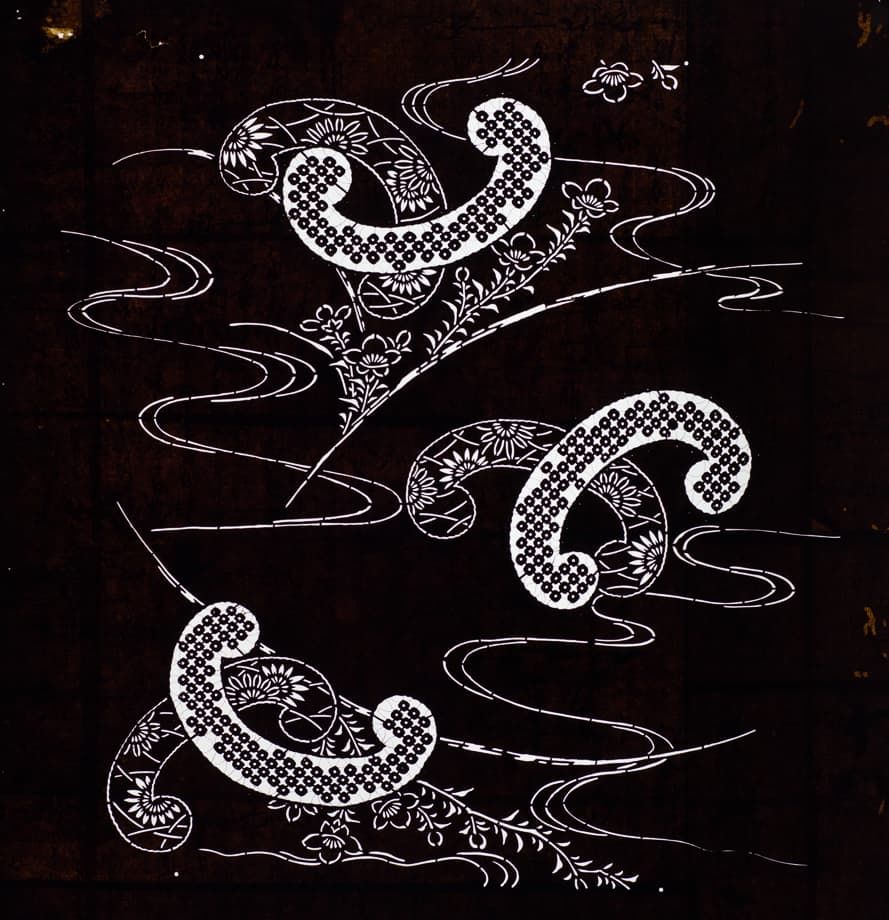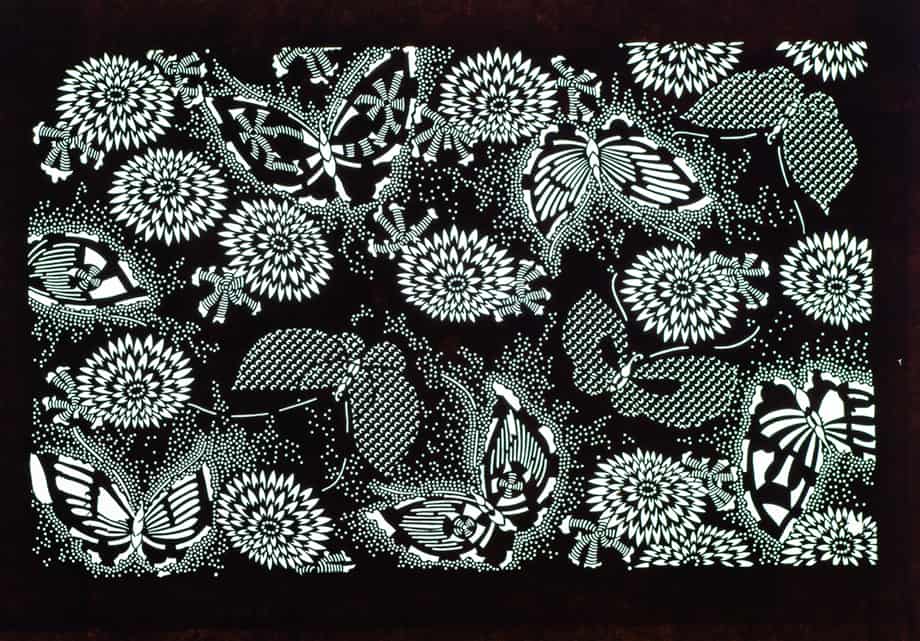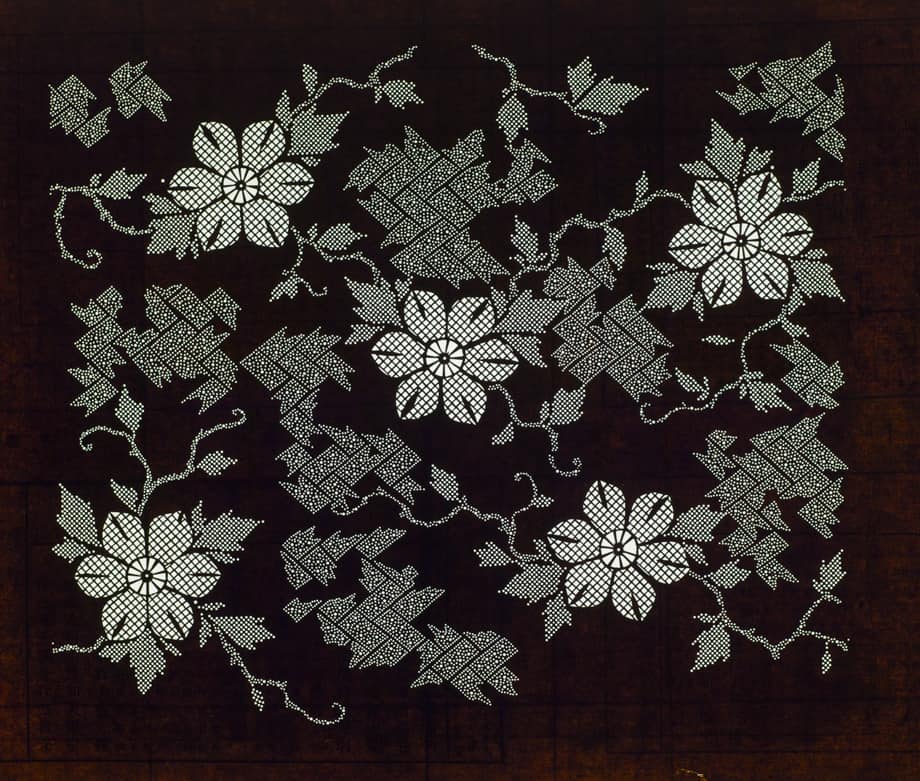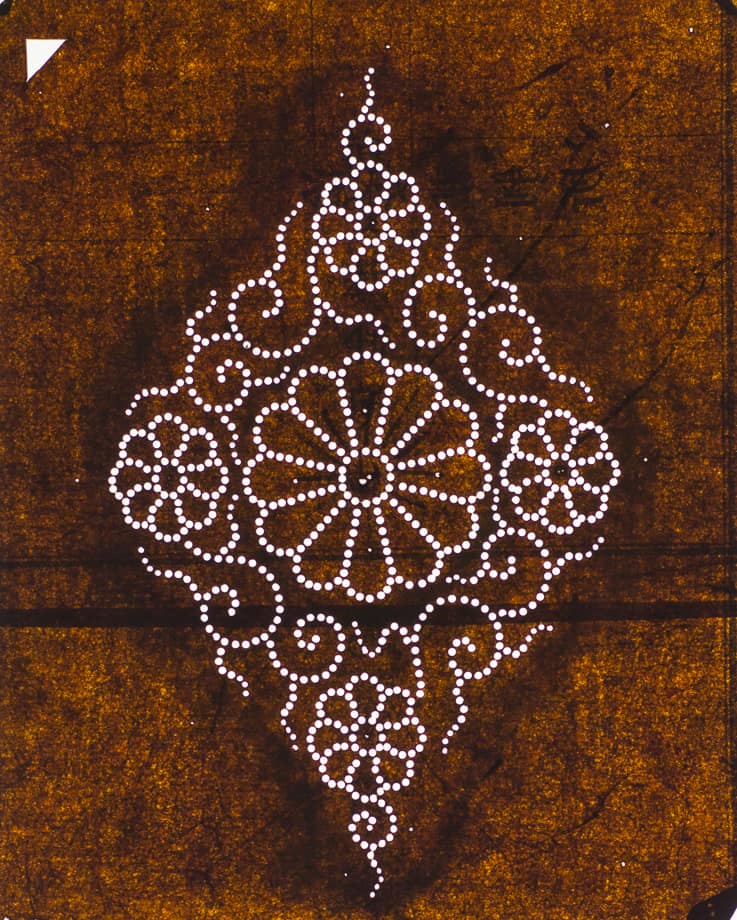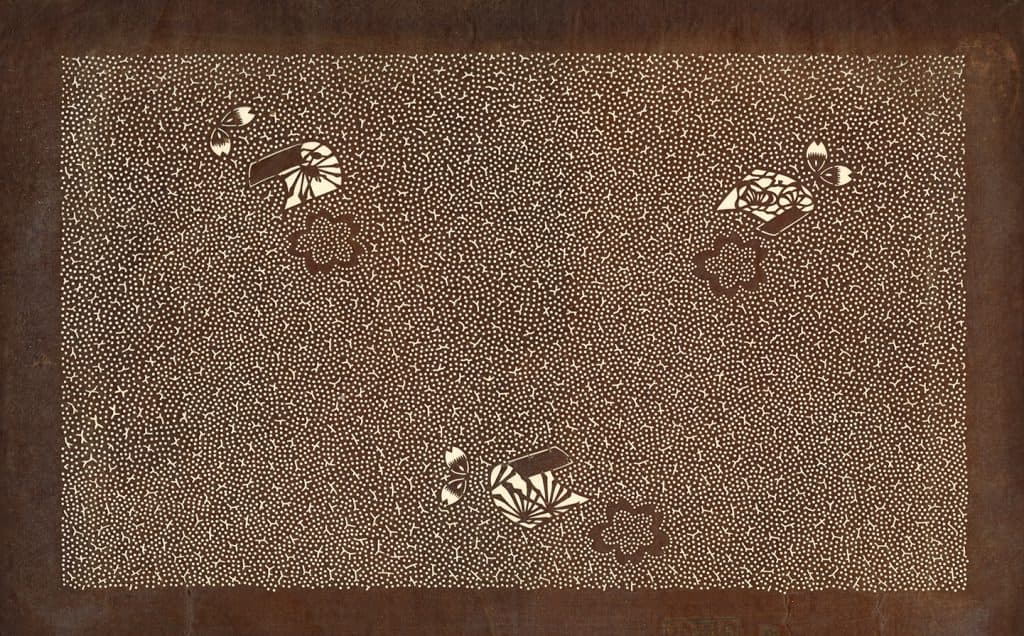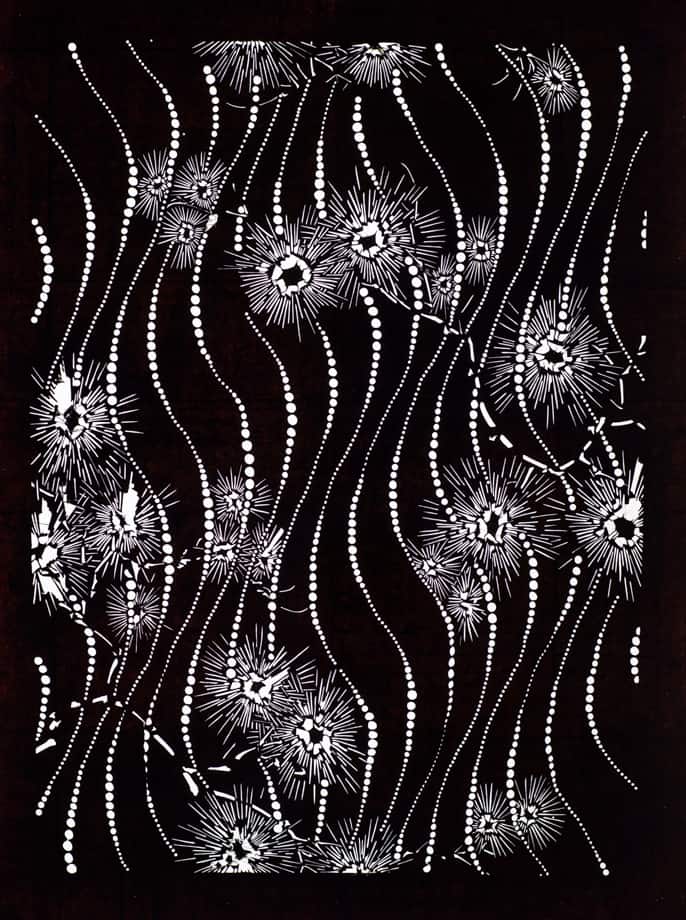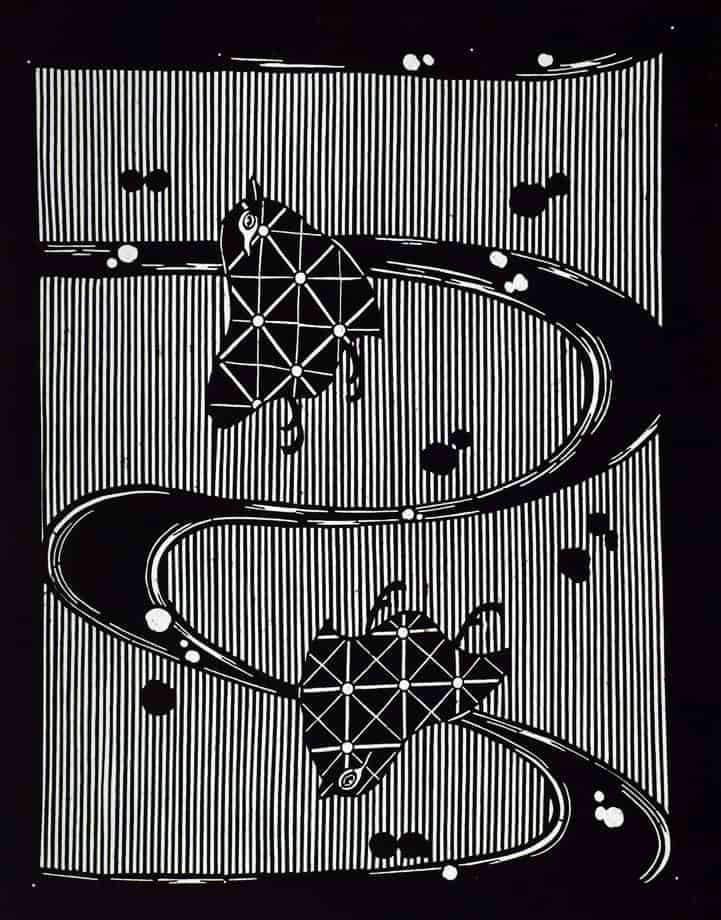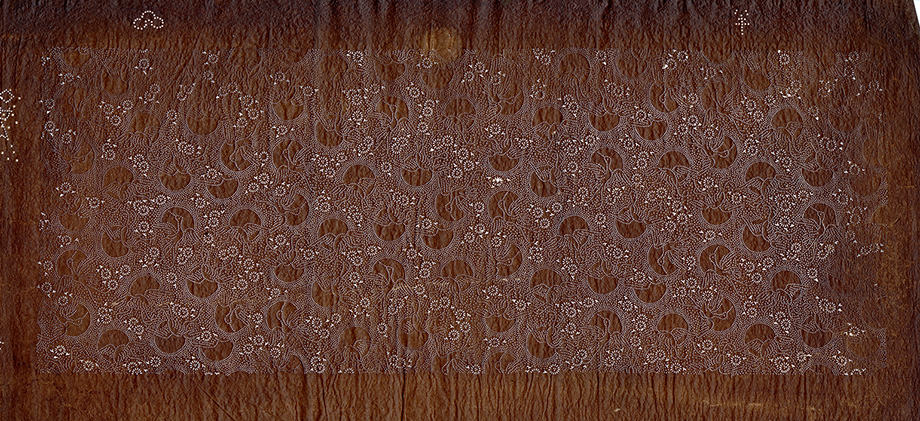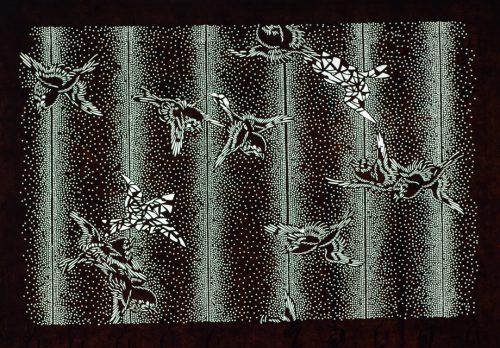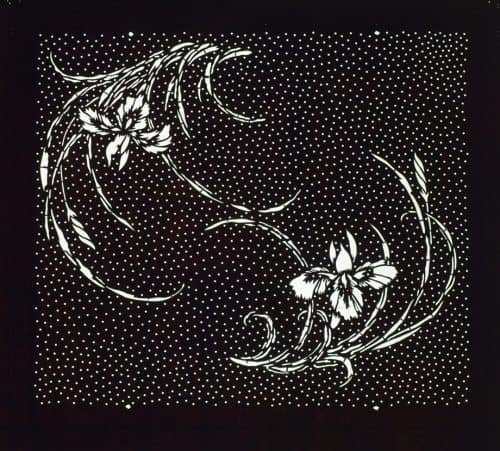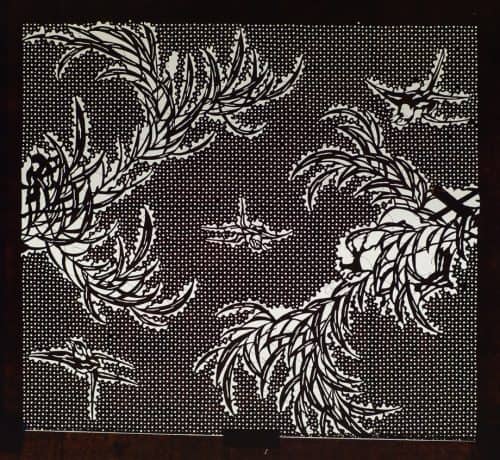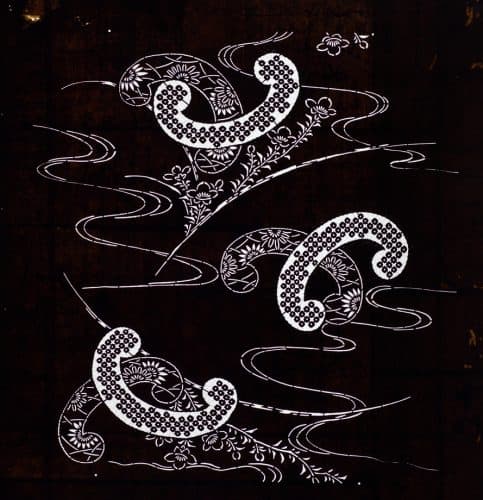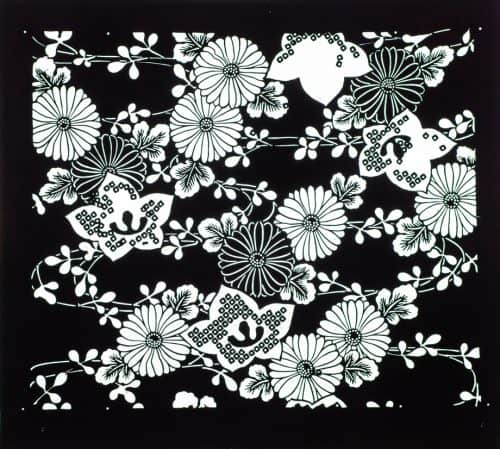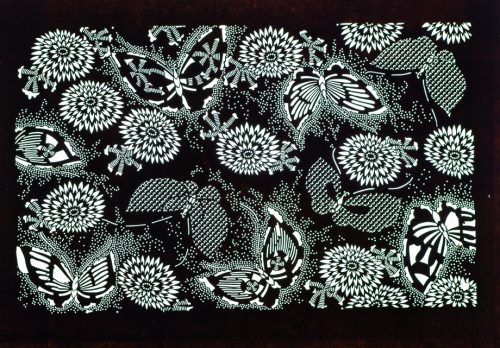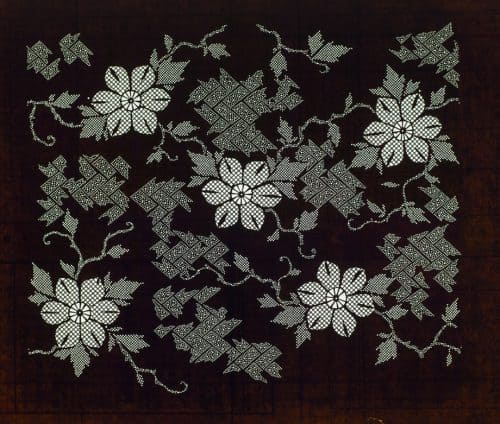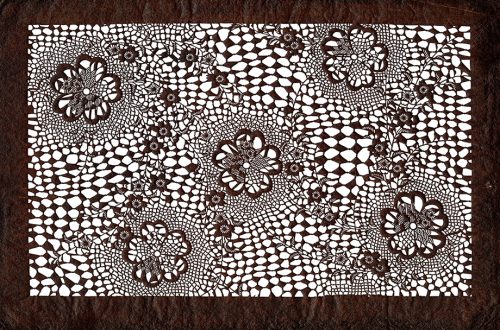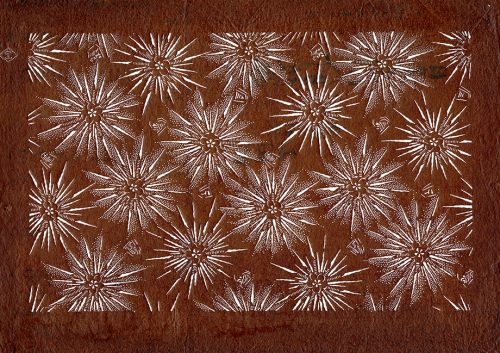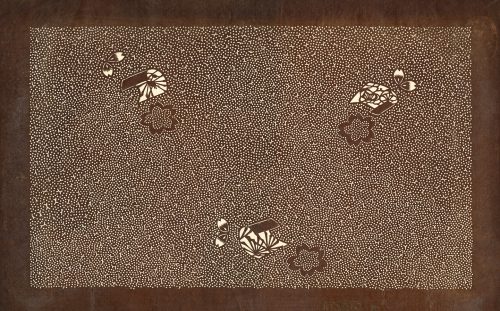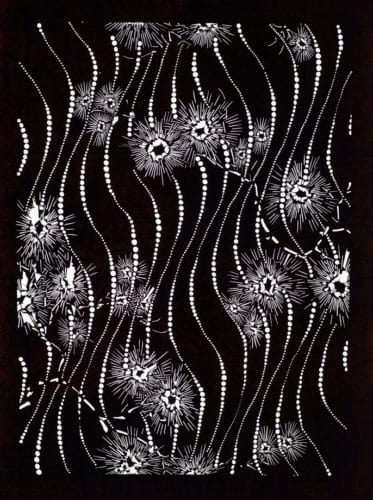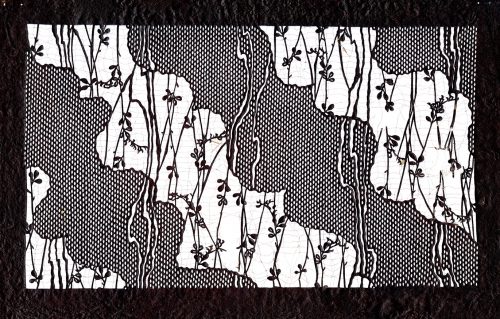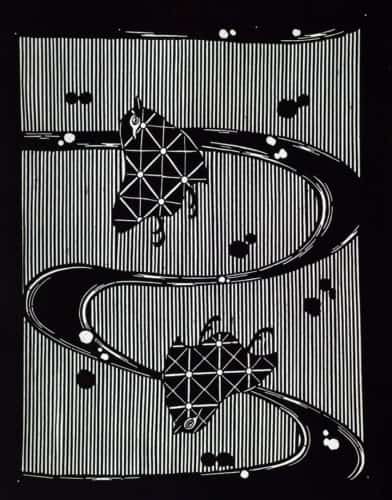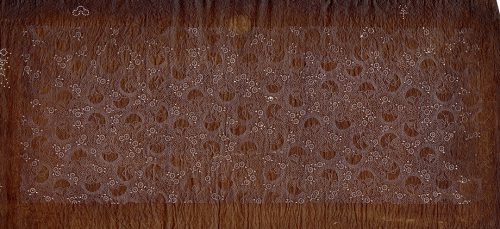Dots
To punch a perfect katagami dot, nestle a punch tool under your cheekbone and then slap the side of your head.
Ha. Got you. Got me too. There are so many mythic stories about katagami. As it happens, fine dot katagami such as these are cut with a tiny crescent shaped drill called a kiri. Others are punch carved but in spite of reports, no slapping. Many simulate high-skill textile making like sharkskin or shibori. Sharkskin is an expensive and labor-intensive leather like material used for the grips of swords. This pattern became popular on samurai kimono and later elite members of society who could afford it. Shibori is Japanese tie dye, in which abundant fine dots as small as a grain of sand are generated to create a fine, flickering effect. Traditional shibori was restricted for use exclusively by the military class. Katagami makers provided less elite folks with stencils that generate similar effects.
Placing a dot in a stencil creates a technical challenge; to print a dark dot on a light field, a speck of paper must be suspended in open space. In many cases, sewn there. Another strategy, nimai gata, two stencils are used. In the first stencil, the dot is held in place with carved paper tie bars. A second stencil lays resist over the tie-bars, erasing the support structure. Find more by searching “dots”, nimai gata, or fawn spots.
